 W
WAlas, Babylon is a 1959 novel by American writer Pat Frank. It was one of the first apocalyptic novels of the nuclear age and has remained popular more than half a century after it was first published, consistently ranking in Amazon.com's Top 20 Science Fiction Short Stories list and has an entry in David Pringle's book Science Fiction: The 100 Best Novels. The novel deals with the effects of a nuclear war on the fictional small town of Fort Repose, Florida, which is based upon the actual city of Mount Dora, Florida. The novel's title is derived from the Book of Revelation: "Alas, alas, that great city Babylon, that mighty city! for in one hour is thy judgment come." The cover art for the Bantam paperback edition was made by Robert Hunt.
 W
WAlternate Tyrants is a 1997 Tor alternate history anthology, edited by Mike Resnick. The anthology contains 20 short stories, with each story by a different author, and presents a scenario where an individual becomes a tyrant or dictator in a way that did not occur in real life.
 W
WApe and Essence (1948) is a novel by Aldous Huxley, published by Chatto & Windus in the UK and Harper & Brothers in the US. It is set in a dystopia, as is Brave New World, Huxley's more famous work. It is largely a satire of the rise of large-scale warfare and warmongering in the 20th century, and presents a pessimistic view of the politics of mutually assured destruction. The book makes extensive use of surreal imagery, depicting humans as apes who, as a whole, will inevitably kill themselves.
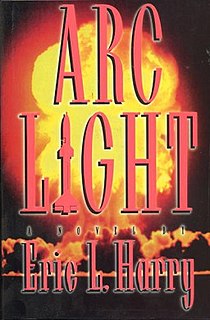 W
WArc Light is the debut novel by Eric L. Harry, a techno-thriller about limited nuclear war published in September 1994 and written in 1991 and 1992.
 W
WA Boy and His Dog is a cycle of narratives by author Harlan Ellison. The cycle tells the story of an amoral boy (Vic) and his telepathic dog (Blood), who work together as a team to survive in the post-apocalyptic world after a nuclear war. The original 1969 novella was adapted into the 1975 film A Boy and His Dog directed by L. Q. Jones. Both the story and the film were well received by critics and science fiction fans, but the film was not successful commercially. The original novella was followed by short stories and a graphic novel.
 W
WCalculated Risk is a 1960 science fiction novel – specifically, a time travel story – by Charles Eric Maine. It was first published in the U. K. by Hodder & Stoughton; a paperback version by Corgi Books appeared in 1962.
 W
WCommander-1 is a 1965 novel by Welsh author Peter Bryan George and deals with the aftermath of a nuclear war between the United States, the Soviet Union and the People's Republic of China. It was George's last published work, with the author committing suicide in 1966.
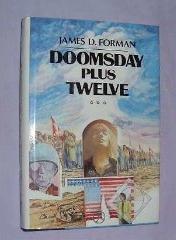 W
WDoomsday Plus Twelve is a 1984 post-apocalyptic novel by James D. Forman.
 W
WThe Door into Summer is a science fiction novel by American writer Robert A. Heinlein, originally serialized in The Magazine of Fantasy & Science Fiction. It was published in hardcover in 1957. The novel is largely hard science fiction, but includes elements of fantasy and a romance.
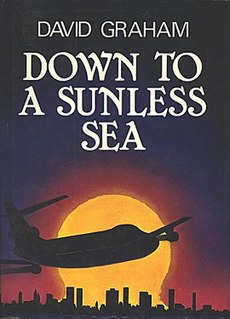 W
WDavid Graham's Down to a Sunless Sea (1979) is a post-apocalyptic novel about a planeload of people during and after a short nuclear war, set in a near-future world where the USA is critically short of oil. The title of the book is taken from a line of the poem Kubla Khan by Samuel Taylor Coleridge.
 W
WDragon Fire is a 2000 novel by BBC political and foreign correspondent Humphrey Hawksley about a 2007 war between China, India and Pakistan, which draws in Australia, Bhutan, Myanmar, Nepal, New Zealand, Tibet, the United Kingdom, and the United States, and threatens to escalate to nuclear war.
 W
WFail-Safe is a bestselling American novel by Eugene Burdick and Harvey Wheeler. The story was initially serialized in three installments in the Saturday Evening Post, on October 13, 20, and 27, 1962, during the Cuban Missile Crisis.
 W
WGhost Fleet is a 2015 techno-thriller by P. W. Singer and August Cole. Set in the near future, the book portrays a scenario in which a post-Communist China, assisted by Russia, is able to launch a technologically sophisticated attack against the United States in the Pacific, leading to the occupation of the Hawaiian Islands.
 W
WHow I Live Now is a novel by Meg Rosoff, first published in 2004. It received generally positive reviews and won the British Guardian Children's Fiction Prize and the American Printz Award for young-adult literature.
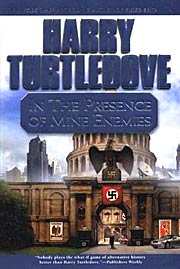 W
WIn the Presence of Mine Enemies is a 2003 alternate history novel by American author Harry Turtledove, expanded from the eponymous short story. The title comes from the fifth verse of the 23rd Psalm. The novel depicts a world in which the United States remained isolationist and so did not participate in the Second World War, thus allowing a victory to the Axis powers, which divided the world among themselves. However, some years after the war, the Third World War occurred and featured the Axis powers defeating the United States and Canada.
 W
WThe Irregular at Magic High School is a Japanese web novel series by Tsutomu Satō. It was published on Shōsetsuka ni Narō, an internet web novel website, between October 2008 and March 2011. Satō reached a deal with Dengeki Bunko and began releasing his work in a light novel format beginning July 2011. The story takes place in an alternate history where magic exists and is polished through technology, and follows Tatsuya and Miyuki Shiba, siblings who enroll into First High magic high school. While keeping their connections to the infamous Yotsuba clan secret, they attempt to live their daily life in peace where Tatsuya is shunned for his apparent ineptness and Miyuki is validated for her magical abilities.
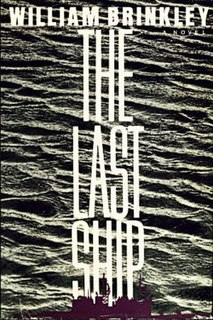 W
WThe Last Ship is a 1988 post-apocalyptic fiction novel written by William Brinkley.
 W
WLong Voyage Back was written by George Cockcroft under the pen name of Luke Rhinehart. It was published in 1983, at the height of the Cold War, and it shows that influence. The author sides with the nuclear disarmament side of the debate and the only character in the book with vociferous views on the subject, the daughter of the lead character, probably represents his own views. It also reflects his love of sailing.
 W
WMighty Samson was a comic book series published Gold Key Comics. A post-apocalyptic adventure, it was set in the area around New York City, now known as "N'Yark", on an Earth devastated by a nuclear war. The series was created by writer Otto Binder and artist Frank Thorne.
 W
W"Missile Gap" is a 2006 English language science fiction novella, originally published in the anthology One Million A.D. by British author Charles Stross. It won the Locus Award for best novella of 2006. The novella was republished in Stross's short-story collection Wireless in 2009.
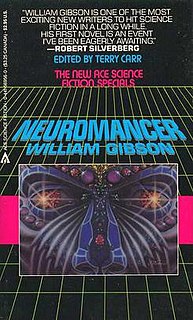 W
WNeuromancer is a 1984 science fiction novel by American-Canadian writer William Gibson. It is one of the best-known works in the cyberpunk genre and the first novel to win the Nebula Award, the Philip K. Dick Award, and the Hugo Award. It was Gibson's debut novel and the beginning of the Sprawl trilogy. Set in the future, the novel follows Henry Case, a washed-up computer hacker who is hired for one last job, which brings him up against a powerful artificial intelligence.
 W
WNot This August, also known as Christmas Eve, is a Hugo Award shortlisted science fiction novel by C.M. Kornbluth. It was originally published in 1955 by Doubleday. It was serialized in Maclean's magazine (Canada) in May and June 1955. A revised edition with a new foreword and afterword by Frederik Pohl was published in 1981 by Tor Books, ISBN 0-523-48518-2. The title comes from author Ernest Hemingway's "Notes on the Next War".
 W
WOn the Beach is a 1957 post-apocalyptic novel written by British author Nevil Shute after he migrated to Australia. The novel details the experiences of a mixed group of people in Melbourne as they await the arrival of deadly radiation spreading towards them from the Northern Hemisphere, following a nuclear war a year previously. As the radiation approaches, each person deals with impending death differently.
 W
WOut of the Ashes is the first book in The Ashes series by William W. Johnstone.
 W
WThe Patriots novel series is a five-novel series by survivalist novelist and former U.S. Army officer and blogger, James Wesley Rawles. It is followed by his Counter-Caliphate Chronicles novel series.
 W
WRed Alert is a 1958 novel by Peter George about nuclear war. The book was the underlying inspiration for Stanley Kubrick's 1964 film Dr. Strangelove or: How I Learned to Stop Worrying and Love the Bomb. Kubrick's film differs significantly from the novel in that the film is a black comedy.
 W
WRed Army is a 1989 Cold War-era war novel written by U.S. Army intelligence analyst Ralph Peters. The alternate history explores a World War III scenario based on a Soviet attack on West Germany across the North German Plain, with defense provided by NATO army corps from the UK, the Netherlands, Belgium, and Germany.
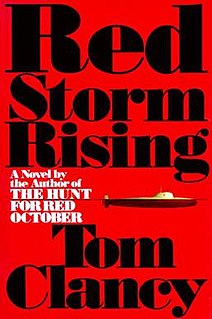 W
WRed Storm Rising is a war novel, written by Tom Clancy and co-written with Larry Bond, and released on August 7, 1986. Set in the mid-1980s, it features a Third World War between the North Atlantic Treaty Organization and Warsaw Pact forces, and is unique for depicting the conflict as being fought exclusively with conventional weapons, rather than escalating to the use of weapons of mass destruction or nuclear warfare. It is one of two Clancy novels, including SSN (1996), that are not set in the Ryanverse.
 W
WResurrection Day is a novel written by Brendan DuBois in 1999. It is an alternate history where the Cuban Missile Crisis escalated to a full-scale war, the Soviet Union is devastated, and the United States has been reduced to a third-rate power, relying on the United Kingdom for aid. It won the Sidewise Award for Alternate History that year.
 W
WTeam Yankee is a techno-thriller novel written in 1987 by Harold Coyle, then a major in the United States Army, whose subject is the actions of a company-sized armor unit of the United States Army in the World War III scenario as depicted by General Sir John Hackett in his novel, The Third World War: The Untold Story. General Hackett's scenario takes place in 1985; Coyle never specifies the year, but it is assumed to take place in the late 1980s. While Hackett's book emphasizes strategy and world politics, Coyles features the experiences of the tank crews and infantrymen fighting on the front lines.
 W
W"There Will Come Soft Rains" is a science fiction short story by author Ray Bradbury written as a chronicle about a lone house that stands intact in a California city that is otherwise obliterated by a nuclear bomb, and then is destroyed by a fire caused by a windstorm. First published in 1950 about future catastrophes in two different versions in two separate publications, a one-page short story in Collier's magazine and a chapter of the fix-up novel The Martian Chronicles, the author regarded it as "the one story that represents the essence of Ray Bradbury.". Bradbury's foresight in recognizing the potential for the complete self-destruction of humans by nuclear war in the work was recognized by the Pulitzer Prize Board in conjunction with awarding him a Pulitzer Prize Special Citation in 2007 that noted, "While time has (mostly) quelled the likelihood of total annihilation, Bradbury was a lone voice among his contemporaries in contemplating the potentialities of such horrors.". The author considered the short story as the only one in The Martian Chronicles as a work of science fiction.
 W
WThe Third World War is an apocalyptic novel, published in 2003 by the British journalist and author Humphrey Hawksley, portraying the modern world as it deals with the ever-worsening geopolitical situation.
 W
WThe Third World War Book is a study of the global events that traces the origins of the First World War and Second World War and examines the cascading effect these wars are likely to have, that will unravel in the times to come in the form of a Third World War.
 W
WThe Third World War: The Untold Story (1982) is an war novel by Sir John Hackett portraying a fictional Third World War between NATO and the Warsaw Pact forces, which breaks out in 1985. It is written in the style of a non-fiction, post-event historical account. It was published in 1982 by Macmillan in New York and Sidgwick & Jackson in London. The book is an update to Hackett's 1978 novel, The Third World War: August 1985.
 W
WTrinity's Child is a 1983 novel by William Prochnau. The book depicts a nuclear war waged between the United States of America and the Soviet Union. During the waning years of the Cold War, the United States has engaged in a massive military buildup, hoping to press the economy of the Soviet Union to breaking point and so force them into political compromise.
 W
W"Un-Man" is a science fiction novella by American writer Poul Anderson, first published in the January 1953 issue of Astounding Science Fiction. It was included in the 1962 collection Un-Man and Other Novellas, and the 1981 collection The Psychotechnic League. As a component of the Psychotechnic League future history, "Un-Man" takes place in the year 2004, between "Marius" and "The Sensitive Man".
 W
WThe Valley-Westside War is a 2008 American young adult alternate history novel by Harry Turtledove. It is the latest in the Crosstime Traffic series.
 W
WWarday is a novel by Whitley Strieber and James Kunetka, first published in 1984. It is a fictional account of the authors travelling across the U.S. five years after a limited nuclear attack in order to assess how the nation has changed after the war. The novel takes the form of a first-person narrative research article and includes government documents, interviews with survivors and aid workers, and present-tense narration.
 W
WWhen the Wind Blows is a 1982 graphic novel, by British artist Raymond Briggs, that shows a nuclear attack on Britain by the Soviet Union from the viewpoint of a retired couple, Jim and Hilda Bloggs. The book was later made into an animated film.
 W
W"World War III" is the title of two comic book sagas published by DC Comics and involving many of the superheroes of the DC Universe. The first was published in 2000 as a story-arc in the JLA ongoing series; the second was published in 2007 as a limited series of its own.
 W
WThe Year of the Quiet Sun is a 1970 science fiction novel by American writer Wilson Tucker, dealing with the use of forward time travel to ascertain future political and social events. It won a retrospective John W. Campbell Memorial Award in 1976. It was also nominated for a Nebula Award for Best Novel in 1970, and a Hugo Award for Best Novel in 1971.